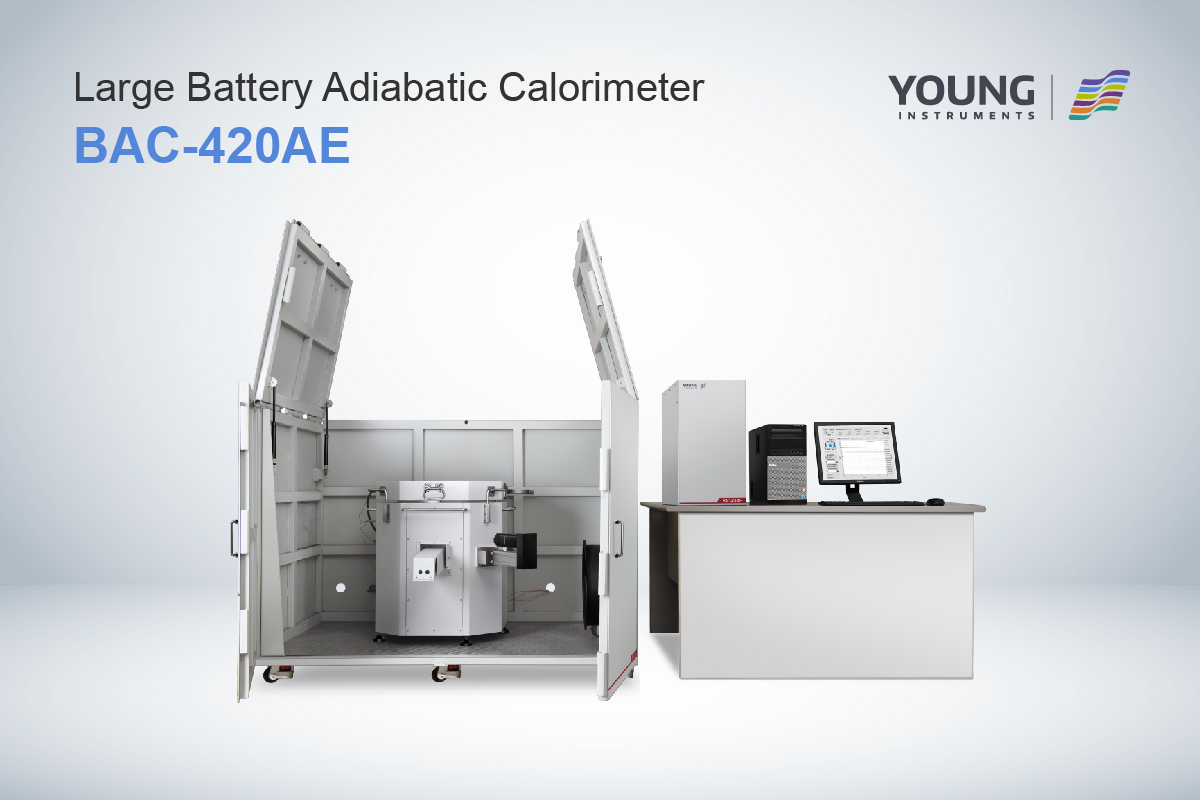Battery Testing Calorimeter: A Comprehensive Guide to Understanding the Importance of Calorimetry in Battery Testing
A Battery Testing Calorimeter is a device that is used to measure the heat generated by a battery during its charging and discharging cycles. This is a crucial test for any battery as it helps to determine the battery’s safety performance and operating limits. The information obtained from the test is used to enhance the battery’s performance, improve its safety, and to develop better battery designs.
The principles of Battery Calorimetry are based on the measurement of heat generated by a battery during its charging and discharging cycles. This measurement is essential in determining the battery’s thermal behavior and electrical performance. The data generated from this test is analyzed to determine the battery’s safety performance, operating limits, and to develop better battery designs.
The Battery Testing Calorimeter Design is critical in ensuring that the device is accurate, reliable, and safe to use. The design should be able to measure the heat generated by the battery accurately, and the device should be able to operate within the battery’s temperature range. The device should also be able to handle the battery’s electrical load and be able to withstand the battery’s mechanical stress.
Key Takeaways
- Battery Testing Calorimeters are essential devices for measuring the heat generated by a battery during its charging and discharging cycles.
- The principles of Battery Calorimetry are based on the measurement of heat generated by a battery during its charging and discharging cycles.
- The Battery Testing Calorimeter Design is critical in ensuring that the device is accurate, reliable, and safe to use.
Principles of Battery Calorimetry
Thermodynamic Fundamentals
Battery calorimetry is based on the first law of thermodynamics, which states that energy cannot be created or destroyed, only transferred from one form to another. When a battery is charged or discharged, it undergoes a chemical reaction that produces heat. This heat can be measured using a calorimeter, which is a device that measures the amount of heat absorbed or released during a chemical reaction.
Measurement Techniques
There are several techniques used to measure the heat generated by a battery during operation. One of the most common techniques is isothermal calorimetry, which measures the heat generated by a battery while maintaining a constant temperature. This technique is particularly useful for high-load testing, as it allows for accurate measurements of heat generation without the concern of temperatures exceeding safe levels.
Another technique is differential scanning calorimetry (DSC), which measures the difference in heat flow between a sample and a reference material as a function of temperature. This technique is useful for characterizing the thermal behavior of a battery, as it allows for the measurement of specific heat capacity, phase transitions, and reaction enthalpies.
Accelerating rate calorimetry (ARC) is another technique used to measure the heat generated by a battery during operation. This technique involves heating a sample at a constant rate, and measuring the heat generated as a function of temperature. This technique is particularly useful for studying the thermal stability of a battery, as it allows for the measurement of exothermic events such as thermal runaway.
Overall, battery calorimetry is a powerful tool for characterizing the thermal behavior of batteries. By measuring the heat generated during operation, it is possible to gain insight into the chemical and physical processes that occur within a battery and to design safer and more efficient battery systems.
Battery Testing Calorimeter Design
When it comes to designing a Battery Testing Calorimeter, there are two main components to consider: the hardware components and the software control systems.
Hardware Components
The hardware components of a Battery Testing Calorimeter are essential for the safe and accurate testing of battery cells. These components include:
-
Adiabatic Calorimeter: This is the heart of the Battery Testing Calorimeter. It is designed to measure the heat generated during a battery cell’s thermal, electrical, and mechanical stress (abuse) tests. The Adiabatic Calorimeter is insulated to prevent heat loss and is equipped with sensors to measure temperature, pressure, and gas composition.
-
Pressure Vessel: The Pressure Vessel is designed to contain the battery cell being tested and is made of materials that can withstand high pressures and temperatures.
-
Thermal Management System: The Thermal Management System is responsible for maintaining the temperature of the battery cell during testing. It is designed to prevent the battery cell from overheating or cooling down too quickly.
-
Gas Management System: The Gas Management System is responsible for controlling the flow of gas in and out of the Adiabatic Calorimeter. It is designed to prevent the build-up of dangerous gases that could cause an explosion.
Software Control Systems
The software control systems of a Battery Testing Calorimeter are responsible for controlling the hardware components and collecting data during testing. These control systems include:
-
Control Software: The Control Software is the interface between the user and the Battery Testing Calorimeter. It allows the user to set up and run tests, monitor the progress of tests, and collect data.
-
Data Acquisition System: The Data Acquisition System is responsible for collecting data from the Adiabatic Calorimeter’s sensors and storing it for analysis. It is designed to collect data at high speeds and with high accuracy.
-
Safety Systems: The Safety Systems are designed to prevent accidents during testing. They include features such as emergency shut-off switches, pressure relief valves, and alarms.
In conclusion, the design of a Battery Testing Calorimeter is critical for the safe and accurate testing of battery cells. The hardware components and software control systems must work together seamlessly to ensure that tests are conducted safely and accurately.
Test Procedures
Sample Preparation
Before testing, it is essential to prepare the samples correctly. The samples should be representative of the battery cells being tested. The samples should be of the same size and shape as the actual cells, and the same materials should be used. The samples should be clean and free of debris, and any protective coating should be removed. The samples should be allowed to equilibrate to the test temperature before testing.
Calorimetry Protocols
The calorimetry protocols used for battery testing calorimeters vary depending on the type of calorimeter and the specific test being performed. However, some general guidelines can be followed.
First, the calorimeter should be calibrated before testing to ensure accurate measurements. The calibration should be performed using a known heat source. The calibration should be performed at the same temperature as the test to be performed.
Second, the sample should be placed in the calorimeter and allowed to equilibrate to the test temperature. The calorimeter should be sealed to prevent any heat exchange with the surroundings.
Third, the test should be performed according to the specific protocol being used. This may involve heating the sample at a constant rate or performing an isothermal test. The heat generated by the sample should be measured continuously during the test.
Finally, the data should be analyzed to determine the thermal behavior of the battery cell. This may involve calculating the heat generated, the heat capacity, and the rate of heat generation. The data can be used to assess the safety and performance of the battery cell.
In summary, proper sample preparation and following the appropriate calorimetry protocols are essential for accurate and reliable battery testing.
Data Analysis and Interpretation
Thermal Data Evaluation
The thermal data evaluation is an essential aspect of the Battery Testing Calorimeter. The calorimeter provides accurate measurements of heat generation during battery operation and abuse testing. The thermal data obtained from the calorimeter can be used to evaluate the thermal stability of battery materials and predict the performance of the battery under different operating conditions.
The thermal data evaluation involves analyzing the heat flow rate, temperature, and heat capacity of the battery during operation. The heat flow rate is the rate at which heat is generated or absorbed by the battery. The temperature is the measure of the thermal energy of the battery, while the heat capacity is the amount of heat required to raise the temperature of the battery by one degree Celsius.
The thermal data obtained from the calorimeter can be used to develop thermal models of the battery. These models can be used to optimize the thermal management system of the battery, improve its performance, and increase its lifespan.
Performance Metrics
The performance metrics of the Battery Testing Calorimeter include accuracy, precision, and repeatability. The accuracy of the calorimeter refers to how close the measured value is to the true value. The precision of the calorimeter refers to how close the measured values are to each other. The repeatability of the calorimeter refers to how consistent the measurements are over time.
The accuracy of the calorimeter is critical to obtaining reliable thermal data. The calorimeter must be calibrated regularly to ensure accurate measurements. The precision of the calorimeter is important for obtaining reproducible results. The repeatability of the calorimeter is essential for obtaining consistent measurements over time.
In conclusion, the Battery Testing Calorimeter provides accurate and reliable thermal data for evaluating the thermal stability of battery materials and predicting the performance of the battery under different operating conditions. The thermal data obtained from the calorimeter can be used to optimize the thermal management system of the battery, improve its performance, and increase its lifespan. The performance metrics of the calorimeter, including accuracy, precision, and repeatability, ensure that the thermal data obtained from the calorimeter is reliable and reproducible.
Safety and Compliance
Regulatory Standards
When it comes to battery testing, safety is of utmost importance. There are several regulatory standards in place to ensure that battery testing is done safely and in compliance with industry standards. One such standard is the UN Manual of Tests and Criteria, which outlines the procedures for testing lithium-ion batteries for transportation safety. Another standard is the IEC 62133, which specifies the safety requirements for portable sealed secondary cells and batteries.
It is important to ensure that your battery testing calorimeter is compliant with these standards. This will help you ensure that your testing is safe, accurate, and reliable. It is also important to ensure that your testing equipment is regularly maintained and calibrated to ensure that it is working properly and providing accurate results.
Best Practices
In addition to regulatory standards, there are also best practices that should be followed when using a battery testing calorimeter. One best practice is to always wear appropriate personal protective equipment (PPE) when handling batteries and conducting tests. This may include gloves, safety glasses, and protective clothing.
Another best practice is to ensure that your testing area is well-ventilated and free of flammable materials. This will help prevent the risk of fire or explosion during testing. It is also important to follow the manufacturer’s instructions for your testing equipment and to ensure that you are using the appropriate testing procedures for your specific battery type.
By following these regulatory standards and best practices, you can help ensure that your battery testing is safe, accurate, and reliable.









































